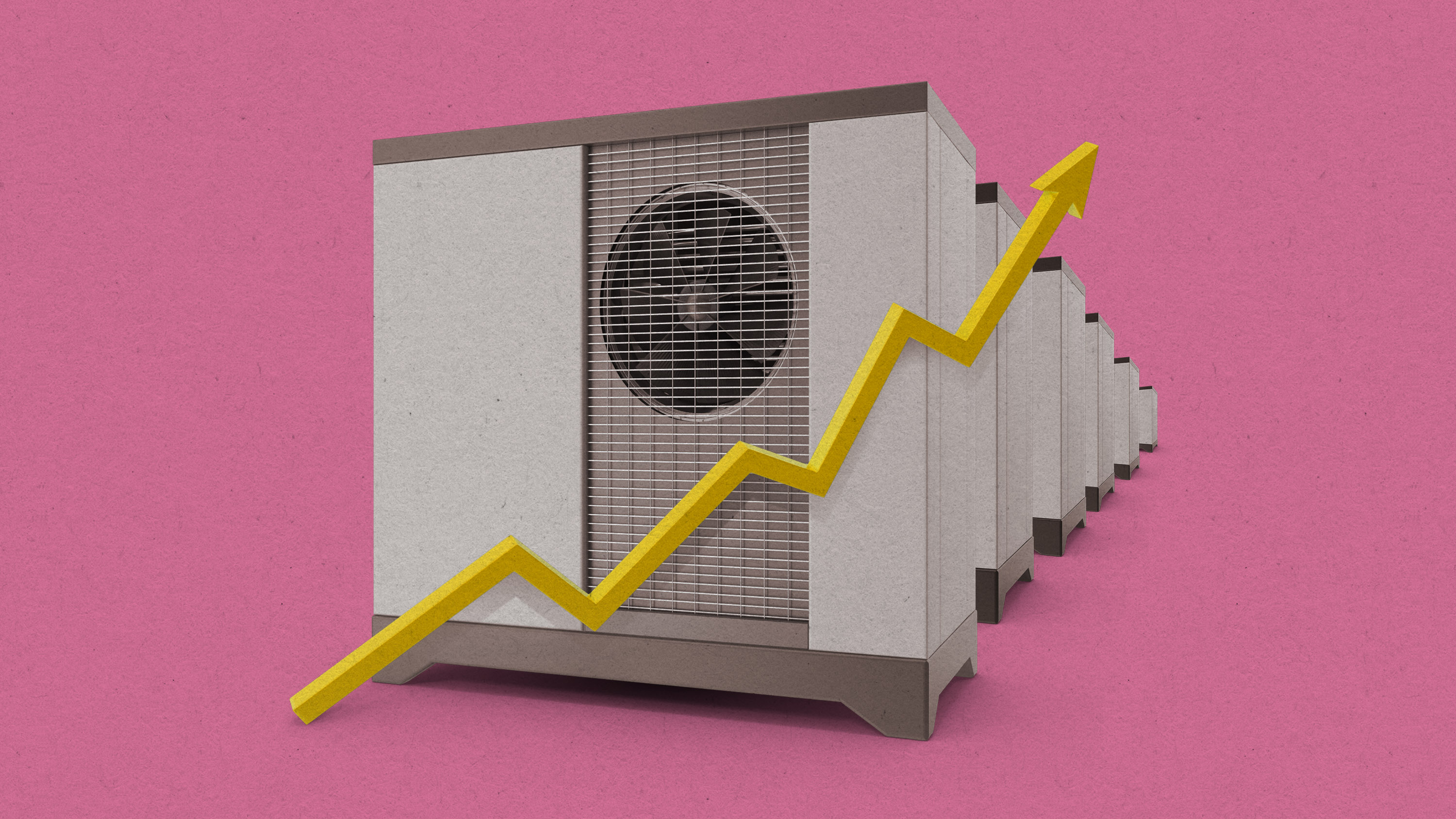Three things to love about batteries
From their key role in climate action to their versatility, there’s a lot to appreciate.

This article is from The Spark, MIT Technology Review’s weekly climate newsletter. To receive it in your inbox every Wednesday, sign up here.
I wouldn’t exactly say I have favorites when it comes to climate technologies. Anything that could help us get closer to tackling climate change is worth writing about, both to share the potential upsides and to carefully look for pitfalls. But I have a special spot in my heart and my reporting notebook for batteries.
After all, what’s not to love? They play a crucial role in climate action, there are a million different kinds that can meet basically any need, and they’re at least a little bit magical.
In honor of everyone’s favorite Hallmark-ified holiday, I thought I’d share a love letter to batteries. In any case, this should give you some sense of why I keep coming back to this subject. (Most recently, I dove into the topic of an alternative battery chemistry, lithium-sulfur—give that a read if you haven’t!)
So, how do I love batteries? Let me count the ways.
They’re practical
Imagine a world that’s on its way to reaching net-zero greenhouse-gas emissions by 2050. That would put us on track to limit global warming to less than 2 °C, or 3.6 °F. To get there, the two biggest sectors to clean up are electricity and transportation: how we power the world and get around. And the common denominator is—you guessed it—batteries.
Some low-emissions power sources, like wind and solar, aren’t consistently available, so they need a little backup. That’s where grid storage comes in—we’ll need to build about 100 times more energy storage by 2050 on the grid to be on track for our net-zero scenario.
This won’t all be batteries—storing energy with pumped hydro, compressed air, and other methods could be key. But batteries, especially if cheaper alternatives can scale, will be a major piece of the puzzle.
Electrifying transport is a similar story. We need to move from gas guzzlers to zero-emission vehicles. And batteries are going to help us do it.
In our net-zero scenario, the world needs about 14 terawatt-hours’ worth of batteries for EVs every year by 2050, according to the International Energy Agency. That’s something like 90 times 2020 production.
They’re versatile
One of my favorite things about battery technology is its adaptability. Researchers are finding and developing new chemistries all the time, and it’s fascinating to follow.
Lithium-ion batteries tend to be the default for the industries I typically write about (think transportation and energy storage). That’s mostly because these batteries were developed for personal devices that became widespread beginning in the 1990s, so they’ve had a head start on scaling and the cost cuts that come along with it.
Even in existing battery technologies, there’s lots of nuance and innovation. Lithium-ion batteries follow a similar blueprint, but there’s a whole world of flavors. Your phone and laptop probably house pouch cells with higher levels of cobalt, whereas your EV likely runs off cylindrical ones that are high in nickel. And a growing fraction of lithium-ion cells don’t include either of those metals—companies are looking at these options for stationary storage or lower-cost vehicles.
But don’t stop there. Next-generation batteries could give us a different chemistry for every occasion. Need a robust, low-cost battery? Try sodium-ion. Even cheaper, for stationary storage? Zinc flow batteries or iron-air might be the chemistry for you. Something for a long-range, high-performance EV? Check out solid state, or maybe something of the lithium-sulfur variety.
I’m often asked which battery chemistry is going to “win.” Not all batteries are going to make it to widespread adoption, and not all battery companies are going to succeed. But I think the answer is that we’ll hopefully see not a single dominant type of battery, but an ever-growing menu of options.
They’re at least a little bit magic
Last but not least, I think that one of the main reasons that I’m obsessed with batteries is that I find them a little bit mystifying. Tiny ions shuttling around in a metal container can store energy for us to use, whenever and wherever we want.
I’ll never get sick of it, and I hope you won’t either. Here’s to spending more time with the ones we love in the year ahead.
Related reading
Read more about lithium-sulfur batteries, which could unlock cheaper EVs with longer range, in my latest story.
For another alternative, check out this story from last year on the sodium-ion batteries that could be closer to hitting the roads.
Form Energy and its iron-air batteries made our 2023 list of 15 Climate Tech Companies to Watch. Read all about them here.
I’m not the first MIT Technology Review reporter to dive in on batteries. Read this 2018 story from my colleague James Temple on why lithium-ion batteries won’t be able to clean up the grid on their own.
Another thing
If you, like me, can’t get enough batteries, I’ve got a great event coming up this week for you! Join me, senior editor James Temple, and editor at large David Rotman for the latest in our Roundtables series, where we’ll be diving into a rousing conversation about batteries and their materials.
This event is open to subscribers, so subscribe if you haven’t yet and come ask all the questions you have about batteries, minerals, and mining! See you there!

More from us
Sales might be down, but heat pumps are still hot. The devices, which can heat and cool spaces using electricity, are gaining ground on fossil fuels in the US. Check out the data in this story for more on why it matters, and what this says about decarbonization prospects for the country and beyond.
Also, I’d like to introduce you to a new colleague, James O’Donnell! He’s joining the AI team, and he’s coming out swinging with a story about how Google is using a new satellite to detect methane leaks. Give it a read, and stay tuned for more great stories from him to come.
Keeping up with climate
Charging EVs might seem like it’s all about being fast, but slow chargers could be the key to getting more renters to adopt the technology. (Grist)
Chinese automaker BYD has seen massive growth in its EV sales, beating out Tesla in the last quarter of 2023 to become the world’s largest EV maker. Here’s how that happened. (New York Times)
→ BYD is moving so fast that the company is getting into shipping to move more vehicles. (MIT Technology Review)
Consumer demand for EVs is slowing a bit. Some companies are looking to smaller vehicles to help jumpstart interest. (IEEE Spectrum)
Dirt is a major carbon store, holding three times as much as the entire atmosphere. The problem for people looking to leverage dirt for carbon removal is that nobody knows exactly how much carbon can be stored in dirt. (Grist)
Last year was an awful one for the offshore wind industry, but things might be looking up in the year ahead. (Heatmap)
→ Here’s what’s coming next for offshore wind. (MIT Technology Review)
This carbon removal startup is powered by sunlight and seawater. Banyu Carbon’s reversible photoacid could help suck up greenhouse gases from the ocean, though experts have questions about the scalability and ecological effects. (Bloomberg)
Deep Dive
Climate change and energy
The problem with plug-in hybrids? Their drivers.
Plug-in hybrids are often sold as a transition to EVs, but new data from Europe shows we’re still underestimating the emissions they produce.
Harvard has halted its long-planned atmospheric geoengineering experiment
The decision follows years of controversy and the departure of one of the program’s key researchers.
Decarbonizing production of energy is a quick win
Clean technologies, including carbon management platforms, enable the global energy industry to play a crucial role in the transition to net zero.
The hard lessons of Harvard’s failed geoengineering experiment
Some observers argue the end of SCoPEx should mark the end of such proposals. Others say any future experiments should proceed in markedly different ways.
Stay connected
Get the latest updates from
MIT Technology Review
Discover special offers, top stories, upcoming events, and more.